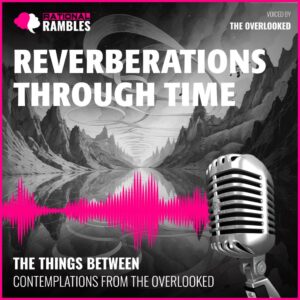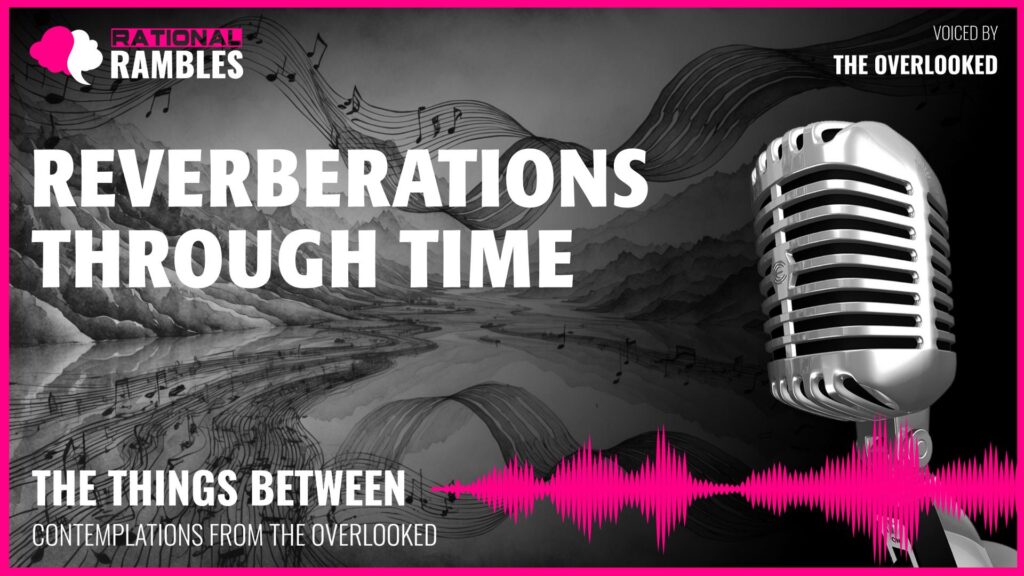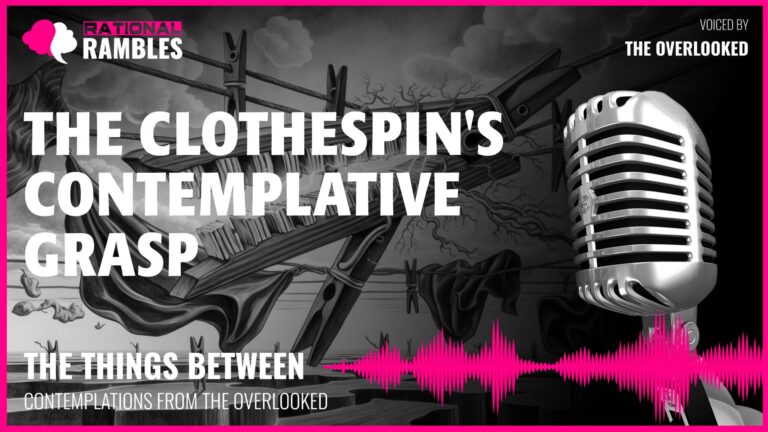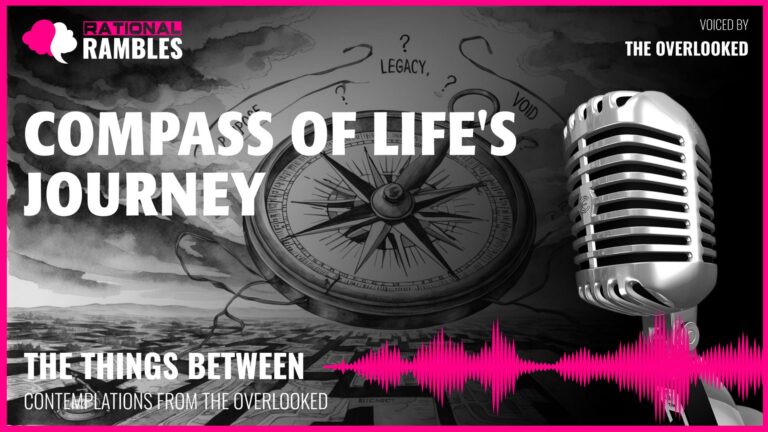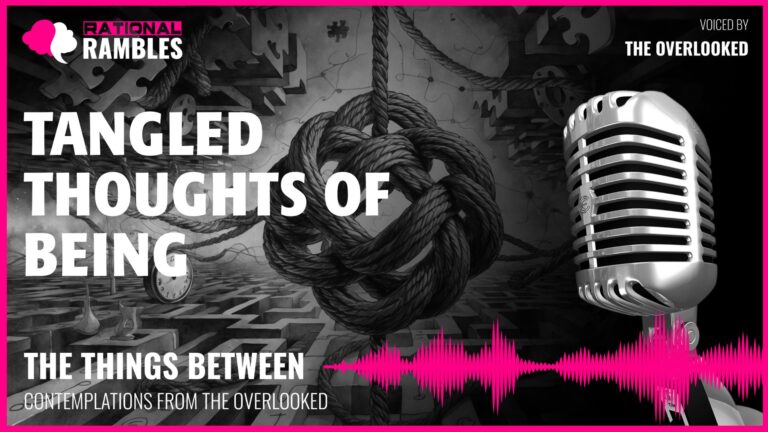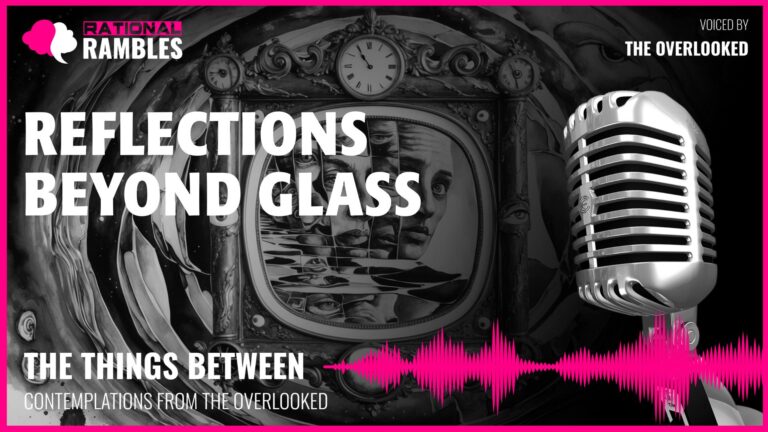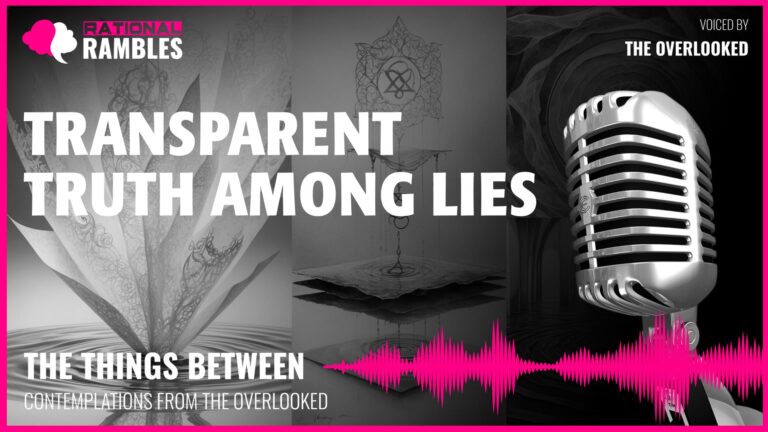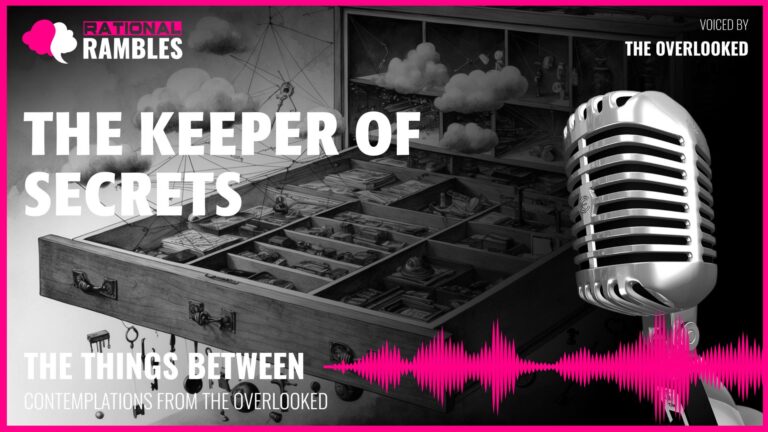Reverberations Through Time: The Ontology of Reflection and Return
Introduction
In the spaces between existence and perception lies a philosophical terrain rarely explored: the nature of reflection itself. We live in a world of returns—where our actions, words, and energies come back to us transformed by their journey. This phenomenon transcends mere physical acoustics and invites us to consider profound questions about identity, time, memory, and the cyclical nature of being. What does it mean to be both the same as and different from one’s source? How do we understand ourselves through what returns to us? And what can the physics of reflection teach us about the metaphysics of existence?
This exploration delves into the philosophy of reflection—not merely as a physical phenomenon but as a paradigm for understanding consciousness, identity, and the relationship between original and copy. By examining the nature of repetition, transformation, and return, we uncover a rich tapestry of insights about what it means to exist in a universe where nothing truly disappears, but rather transforms and returns in altered form.
The Ontology of Reflection
Reflection presents a fascinating ontological puzzle. It exists as both phenomenon and relationship—neither fully independent nor fully dependent. Like Sartre’s “being-for-itself,” a reflection possesses a curious semi-autonomy, defined by its relationship to something else yet manifesting unique properties of its own.
Between Being and Non-Being
The philosophical status of reflections has perplexed thinkers since antiquity. Plato might have categorized reflections as imitations twice removed from the Forms—mere shadows of physical reality, which itself is a shadow of true Being. Yet this hierarchical demotion fails to capture something essential about reflections: they are not merely degraded copies but transformations that reveal aspects of reality sometimes invisible in the original.
Consider how reflections exist in a liminal space between being and non-being. They are real physical phenomena—sound waves rebounding from surfaces, light reflecting from mirrors—yet they lack independent existence. They are contingent beings, dependent on both their source and their medium. This contingency doesn’t make them less real but differently real.
Heidegger’s concept of “present-at-hand” versus “ready-to-hand” offers another perspective. A reflection is never merely present as an object; it is always in relation, always becoming through its reference to something else. Its being is fundamentally relational rather than substantial.
The Metaphysics of Copy and Original
What does it mean to be a copy? In Baudrillard’s postmodern analysis, the distinction between original and copy eventually collapses into simulacra—copies without originals. While this extreme position may overreach, it highlights how problematic the original/copy dichotomy becomes upon close examination.
Every supposed “original” is itself influenced by predecessors. The supposedly original sound that creates an acoustic reflection was itself shaped by the speaker’s previous experiences, by evolutionary history, by cultural context. As Derrida might observe, the very concept of originality depends upon the possibility of repetition.
Moreover, the copy always differs from its source. An acoustic reflection undergoes transformation—certain frequencies fade faster than others, the medium shapes the message, distance alters clarity. The reflection is both the same and different, presenting us with a paradox of identity that challenges binary thinking.
This paradox extends beyond physics into ontology itself. If being is dynamic rather than static—as process philosophers like Whitehead and Bergson contended—then perhaps all existence is reflective in nature, constantly bouncing between states of becoming rather than fixed in stable identity.
Time, Memory, and Reflection
Reflection phenomena reveal profound insights about temporality. An acoustic reflection creates a measurable gap between original sound and its return—a perceptible manifestation of time itself. This relationship between reflection and temporality offers rich philosophical terrain.
The Temporality of Return
Reflections make time audible and visible. The delay between sound and echo, between action and consequence, creates what Husserl might call a “temporal fringe”—a space where past and present intermingle. This challenges linear conceptions of time by creating a loop, a return, a circle rather than an arrow.
Nietzsche’s concept of eternal recurrence finds an acoustic analog in the phenomenon of multiple reflections—each return slightly altered, slightly diminished, yet recognizably related to what came before. Time becomes not just sequential but cyclical, not just progressive but recursive.
This recursive temporality suggests a different way of measuring existence—not in standard chronological units but in the interval between creation and reflection. Time becomes relational rather than absolute, measured by return rather than by uniform progression. This echoes Einstein’s relativity in physical terms but extends into metaphysical considerations of how we experience temporality.
Reflection as Memory
Is reflection a form of memory? The parallel is striking. Memory, like an echo, returns experiences to us—altered, sometimes diminished, yet recognizably connected to the original event. Both memory and reflection preserve something of the past within the present.
Bergson distinguished between pure memory and habit memory. Pure memory preserves the past as past, while habit memory incorporates the past into present action. Reflection phenomena seem to embody aspects of both—preserving the original (like pure memory) while transforming it through its new context (like habit memory).
If reflections can be understood as a kind of physical memory—the world remembering sounds through their return—this suggests a distributed model of memory beyond the brain. The environment itself becomes a recording and playback mechanism, preserving traces of what has occurred within it. This resonates with contemporary extended mind theories that see cognition as distributed beyond the boundary of the skull.
Memory, like reflection, is selective. Just as soft sounds may not generate perceptible echoes, minor experiences often fail to imprint themselves in memory. Both systems have thresholds of significance—events must have sufficient “amplitude” to generate returns. This selectivity is not a flaw but a feature, allowing for meaningful patterns to emerge from background noise.
Identity and Transformation
The relationship between reflection and identity raises profound questions about selfhood. If a reflection is both the same as and different from its source, what does this tell us about the nature of identity itself?
The Ship of Theseus Effect
The ancient paradox of the Ship of Theseus asks whether an object remains the same when all its component parts have been gradually replaced. Reflection phenomena present a similar paradox: the reflected sound contains the same information as the original, yet every physical property has been transformed through the process of reflection.
This transformation is not random but follows patterns based on the medium, distance, and surfaces involved. The reflection remains recognizable despite these changes—suggesting that identity may be more about pattern and relationship than about material continuity. This aligns with information-theoretic approaches to identity that focus on preserved patterns rather than preserved substances.
The Buddhist concept of anatta (no-self) finds resonance here. If identity is not fixed but constantly in flux—transforming through reflection and return—then perhaps the solid self is an illusion. What we call identity might be better understood as a process of continuous reflection and transformation rather than a stable entity.
Authenticity in Repetition
Western philosophy has often privileged originality over repetition, authenticity over imitation. Heidegger contrasted authentic existence with the inauthentic following of social conventions. Yet reflection phenomena challenge this hierarchy by suggesting that repetition itself can reveal truth.
Kierkegaard explored repetition as a philosophical concept, distinguishing between mere recollection (backward-looking) and true repetition (forward-looking). For Kierkegaard, authentic repetition involves not just copying the past but renewing it with fresh significance. Similarly, reflections are not mere copies but renewals—the same content experienced differently.
There is authenticity in the transformation that occurs through reflection. The changes are not falsehoods or distortions but revelations of how the original interacts with its environment. This suggests that authenticity might not lie in originality alone but in honest relationship—in the integrity of the transformation process.
The Dialectics of Reflection
Reflection phenomena embody numerous dialectical relationships—opposing forces held in productive tension. These dialectics reveal deeper patterns of existence beyond the specific physics of echoes.
Presence and Absence
Reflection exists in the relationship between presence and absence, sound and silence. Without silence, reflections cannot be discerned. Without sound, there is nothing to reflect. This interdependence highlights a fundamental dialectic in existence itself—that being emerges in contrast to non-being, presence is defined against absence.
Heidegger’s concept of the “clearing” (lichtung) in which Being can appear finds a parallel in the acoustic space necessary for reflections. Just as Being needs an open space to manifest, reflections require the right balance of surfaces and openness to form. Both depend on a curious interplay between structure and emptiness.
The void is not nothing but potential. Reflective spaces exist in potential around us, waiting for the right conditions to manifest. This ontology of potential challenges binary thinking about existence and non-existence by positing a third state—that which exists in possibility, waiting to be actualized under appropriate conditions.
Agency and Receptivity
Another dialectic embodied in reflection is that between agency and receptivity. A reflection cannot choose when to occur—it cannot refuse to reflect a sound that reaches it with sufficient energy. Yet within this apparent constraint lies a different kind of freedom—the freedom of perfect responsiveness, of being fully what one is without resistance.
This dialectic challenges Western philosophy’s privileging of active agency over passive receptivity. In many Eastern philosophical traditions, particularly Taoism, receptivity is not weakness but strength—the capacity to respond appropriately to whatever arises. The reflection embodies wu-wei (non-forcing action)—not by imposing its will but by perfectly resonating with what is given.
Human consciousness might be understood through this dialectic as well. We are neither purely passive recipients of experience nor wholly autonomous agents imposing meaning. Rather, we exist in the dynamic relationship between reception and response, between being acted upon and acting in return.
The Ethics of Reflection
Beyond ontology and metaphysics, reflection phenomena suggest ethical dimensions worth exploring. What moral insights might we derive from understanding the world in terms of return and reflection?
The Return of Action
Across cultures, we find the ethical insight that actions return to their doers—whether through karma, divine justice, or natural consequence. Reflection phenomena provide a physical analog for this moral principle: what we send into the world comes back to us, though perhaps transformed by its journey.
This principle of return challenges purely consequentialist ethics by suggesting that moral significance lies not just in outcomes for others but in how actions reflect back upon the doer. It also complicates deontological approaches by emphasizing relationship over absolute rules. The ethics of reflection is inherently relational, focused on patterns of giving and receiving rather than fixed principles.
The Kantian categorical imperative—to act only according to that maxim by which you can at the same time will that it should become a universal law—finds a physical analog in reflection. One might reformulate it: act only in ways you would wish to have reflected back to you. This is not mere self-interest but an acknowledgment of the reflective nature of reality.
Democratic Reflection
There is something inherently democratic about reflection phenomena. They reflect all sounds that reach them with sufficient strength—regardless of language, meaning, or intention. They do not judge what they reflect; they simply return what is given.
This suggests an ethics of receptivity and non-judgment. Just as reflections don’t discriminate between sounds based on their content or source, perhaps moral attention should be directed toward all with equal care. This aligns with care ethics and certain Buddhist practices of universal compassion.
Yet reflections are also selective in a non-discriminatory way—soft sounds may not create perceptible echoes. This suggests a natural ethics where significance comes not from arbitrary judgment but from inherent intensity. What matters most ethically may be what has sufficient “amplitude” to generate returns in the world.
Reflection in Human Experience
Beyond abstract philosophy, reflection phenomena pervade human experience in concrete ways. Examining how we interact with reflections reveals deeper patterns in how we relate to ourselves and our world.
The Joy of Recognition
Children often delight in hearing echoes—laughing at the return of their own voices. This simple joy reveals something profound about human nature: we find pleasure in recognition, in hearing ourselves from outside ourselves. This external return of the self creates a loop of consciousness that may be fundamental to self-awareness.
This delight in reflection may underlie more sophisticated aesthetic experiences as well. We enjoy art partly because we recognize ourselves in it—our experiences, emotions, and thoughts reflected back in transformed ways. As Oscar Wilde observed, “It is the spectator, and not life, that art really mirrors.”
The pleasure of recognition suggests that identity is not a fixed internal property but emerges through reflection—through seeing oneself mirrored in the external world. This resonates with Lacanian psychoanalysis, which posits that self-identity develops through the “mirror stage” when an infant first recognizes its reflection.
Designing Reflection
Humans actively shape reflective spaces—concert halls, cathedrals, theaters—to control how sounds return. This architectural practice of acoustic design represents a sophisticated manipulation of reflection phenomena for aesthetic and practical purposes.
This deliberate shaping of reflective environments parallels how humans construct social spaces to reflect desired identities. Just as architects design spaces to produce particular kinds of echoes, social institutions and practices are designed to reflect and reinforce particular values and self-understandings.
Yet other modern spaces are designed to eliminate reflection through sound-dampening materials. This suppression of natural reflection may parallel broader cultural tendencies to minimize the return of consequences—a desire for actions without echoes, for speech without response, for consumption without consequence.
Reflection in Cultural Imagination
Across cultures and throughout history, reflection phenomena have inspired rich symbolic meanings that transcend their physical properties.
Mythic Dimensions
The Greek myth of Echo—the nymph cursed to only repeat the words of others—represents one of many mythological elaborations of reflection phenomena. This personification highlights how reflecting can be both connection and limitation, both relationship and constraint.
In many indigenous traditions, echoes were understood as the voices of spirits or ancestors—the dead responding to the living across the boundary between worlds. This interpretation recognizes the uncanny quality of hearing a disembodied voice return from seeming emptiness.
The mythic dimensions of reflection speak to how humans naturally extend physical phenomena into metaphysical realms. The echo becomes not just rebounding sound waves but communication with the other, the beyond, the hidden dimensions of reality normally inaccessible to direct perception.
Metaphorical Extensions
The concept of “echoing through time” has become a powerful metaphor for historical influence and cultural memory. Great events, words, and figures are said to echo through history—their influence returning in new contexts, transformed but recognizable.
Literature employs reflection as metaphor in countless ways. From Narcissus gazing at his reflection to Borges’ labyrinthine mirrors, reflective phenomena provide rich symbolic material for exploring questions of identity, reality, and perspective.
Even in scientific discourse, reflection terminology has extended beyond its original physical meaning. We speak of “reflecting” on ideas, of “echoing” others’ sentiments, of “mirroring” behaviors. These linguistic extensions reveal how deeply reflection phenomena have shaped human conceptual frameworks.
Reflection and Consciousness
Perhaps the most profound philosophical implications of reflection concern consciousness itself. Could consciousness be understood as a kind of reflective phenomenon—an internal echo chamber where experiences reverberate and return?
The Reflective Mind
The term “reflection” already has established usage in discussions of consciousness—we “reflect” on our thoughts, engaging in meta-cognition. This linguistic connection may reveal a deeper truth: that consciousness involves a reflective architecture where awareness bounces back upon itself.
Douglas Hofstadter’s concept of “strange loops” posits that consciousness emerges from self-referential systems—systems that reflect back upon themselves in recursive patterns. Like sounds bouncing between parallel walls, creating cascading echoes, thoughts may reverberate within neural structures to create the phenomenon of self-awareness.
If thoughts are the echoes of experience, and memories the echoes of perception, perhaps all consciousness can be understood as a complex system of reflections, each mental state bouncing off the walls of previous understanding to create new patterns of meaning.
Intersubjective Reflection
Beyond individual consciousness, human interaction involves complex patterns of reflection. Conversation itself is a kind of organized echo—I speak, you respond, I respond to your response. Social mirroring, where we unconsciously adopt the mannerisms and expressions of those around us, represents another form of interpersonal reflection.
Martin Buber’s philosophy of dialogue emphasizes the “between” space where genuine I-Thou relationships occur. This intersubjective space might be understood as a reflective domain where self and other bounce off each other, creating something beyond either individual consciousness.
Cultural transmission similarly works through reflective processes. Ideas, practices, and values reflect from person to person, community to community, generation to generation—each transmission involving both faithfulness to the original and transformation through the new context.
The Physics and Metaphysics of Transformation
The physical processes underlying reflection phenomena can illuminate metaphysical questions about transformation and persistence through change.
Selective Transmission
Physical reflections are selective in what they transmit. Different frequencies attenuate at different rates, surfaces absorb some wavelengths while reflecting others, distance affects clarity. This selective transmission creates a transformation that preserves pattern while altering specifics.
This selective quality parallels how ideas transform as they move through culture, how memories transform over time, how traditions transform across generations. What persists is not exact replication but pattern maintenance amid transformation—core structures preserved while details evolve.
Understanding this selective transmission process helps resolve the philosophical tension between change and continuity. Identity through time may not require immutability but rather pattern preservation amid inevitable transformation—just as an echo remains recognizably related to its source despite alterations.
Environmental Conditioning
Physical reflections are shaped by their environment—by humidity, temperature, the material properties of reflective surfaces. The same original sound will reflect differently in a cathedral, a canyon, or a carpeted room.
This environmental conditioning parallels how human development is shaped by context. The same inherent potentials develop differently in different cultural environments, socioeconomic circumstances, or historical periods. Neither purely nature nor purely nurture, human becoming involves the interaction between inherent patterns and environmental conditions.
Heidegger’s concept of “thrownness” (Geworfenheit) captures this aspect of human existence—we find ourselves “thrown” into particular circumstances that shape how our possibilities unfold. Like sound waves traveling through a specific acoustic environment, our development follows patterns conditioned by the world we inhabit.
Reflection and Creative Transformation
Beyond passive reception and return, reflection phenomena involve creative transformation—the emergence of new patterns through the process of return.
Emergence Through Reflection
When multiple reflections overlap, they create interference patterns—areas of reinforcement and cancellation that form new acoustic structures not present in the original sound. These emergent patterns represent something genuinely new arising from the process of reflection itself.
This emergence parallels how new ideas arise through the interaction of existing concepts, how cultures develop through the meeting of traditions, how innovations emerge through recombination of established elements. Creativity often involves not ex nihilo creation but reflective transformation—existing elements bouncing off each other to create new patterns.
Complexity theory examines how simple rules of interaction can produce emergent phenomena of surprising sophistication. Reflection processes, with their recursive loops and transformative returns, exemplify how complexity can arise from relatively straightforward principles of reflection and return.
Artistic Reflections
Artists have long worked with reflective processes—from music that employs literal echoes to visual art that uses mirrors or repetitive elements. These artistic uses of reflection go beyond simple mimicry to explore transformation, perspective, and the creative potential of return.
In music, techniques like canon and fugue employ reflective principles where melodic lines echo and transform each other. Jazz improvisation involves reflective dialogue between musicians, each responding to and transforming what others have played. These musical forms reveal how reflection can be not just repetition but creative development.
Literary techniques like motif and reprise similarly employ reflective principles—themes return throughout a work, transformed by their new context yet recognizably connected to earlier appearances. This creates both coherence and development, unity and progression.
Conclusion: Living in a World of Returns
The philosophical examination of reflection phenomena reveals a profound truth: we exist in a world of returns. Every action, every sound, every energy we send into the world comes back to us—changed by its journey, fainter perhaps, but recognizably related to what we’ve given.
This principle of return operates across scales and domains—from the acoustic physics of sound reflection to the moral dynamics of action and consequence, from the psychological processes of memory and consciousness to the social patterns of cultural transmission and transformation.
Understanding existence through the paradigm of reflection offers several philosophical insights:
- Identity involves both continuity and transformation—like an echo, we remain connected to our past while continually changing through our interactions with the world.
- Time is not merely linear but recursive—the past returns to the present in transformed ways, creating loops of influence and meaning.
- Consciousness may itself be a reflective phenomenon—a system of mental echoes where experiences return upon themselves to create self-awareness.
- Ethics can be understood in terms of return—actions reflect back upon their doers, creating responsibility through relationship rather than abstract principle.
- Creativity emerges through reflective processes—new patterns arising from the transformation and recombination of existing elements.
Perhaps most profoundly, the philosophy of reflection challenges the illusion of separation. In a world of returns, nothing we do vanishes completely. Every action creates ripples that eventually return, connecting us inextricably to our environment and to each other.
This connected understanding of existence offers an alternative to both atomistic individualism and deterministic collectivism. We are neither isolated monads nor mere extensions of our environment, but rather participants in an ongoing process of reflection and return—sending forth aspects of ourselves and being shaped by what comes back to us.
The universe, seen through this lens, becomes not a collection of separate objects but a vast system of reflections—each entity defined by its relationships, each action returning in transformed ways, each moment containing echoes of what came before. We live not in static being but in dynamic becoming, not in isolation but in resonance, not in finality but in reverberation through time.


